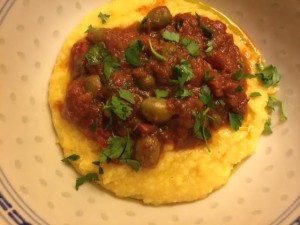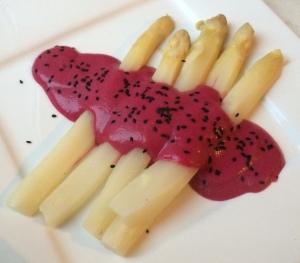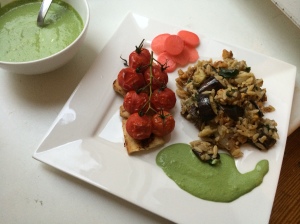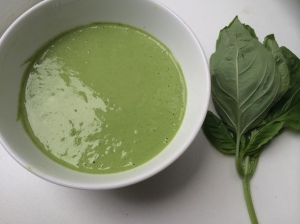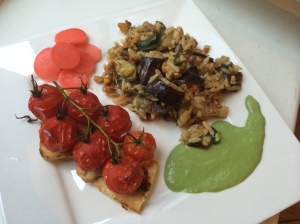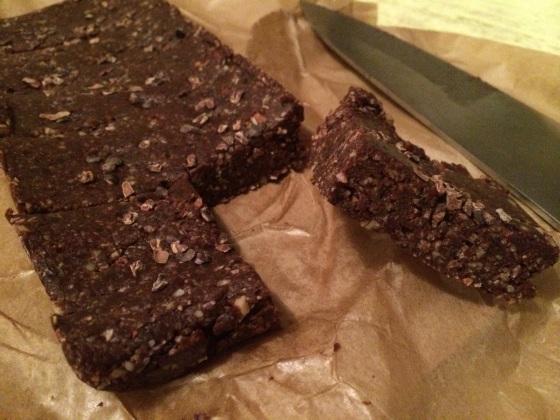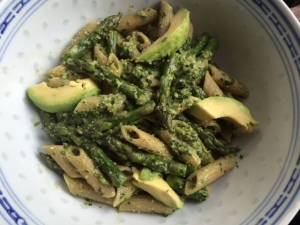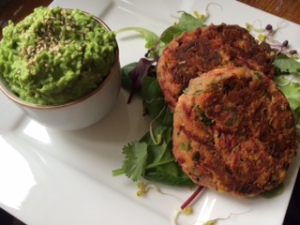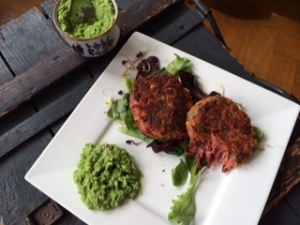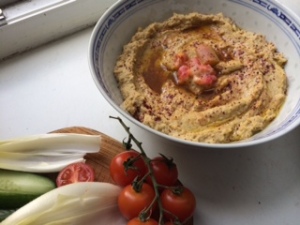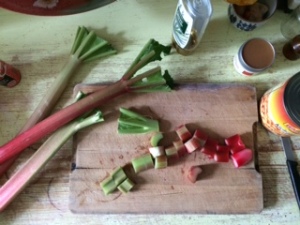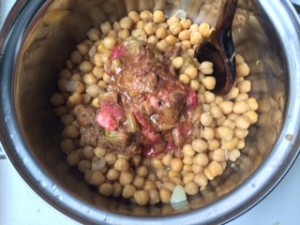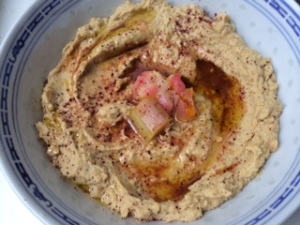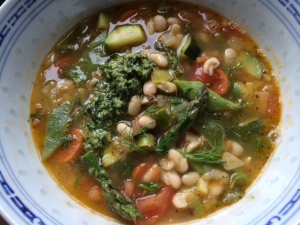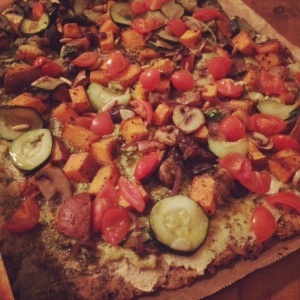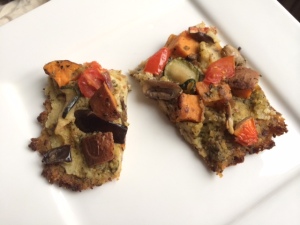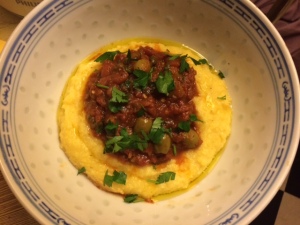
Polenta with Tomato, Caper and Olive sauce
The beginning of this week I was plagued with an insatiable hunger and non stop cravings for sinful foods. Nachos, mountains of pasta and pizza were all I could think of.
On Tuesday, I kept putting off cooking dinner as I simply couldn’t decide if I was going to succumb to the dark side or not. Until at about 9:30, I found myself at the supermarket, resisting.
Somehow, I managed to fight these naughty urges and came up with a compromise in the guise of this polenta and tomato sauce dish.
It was perfect.
Luscious and creamy polenta enhanced by the addition of a good Spanish olive oil and a healthy glug of tahini, paired with a rich tomato sauce bursting with flavour from the generous amount of capers and olives. This perfectly curbed the more unhealthy Italian foods I was envisaging.
It was actually my first time cooking with polenta, but it was a doddle, simply add hot water and stir! Just be careful you don’t add too little as it would become extremely thick and difficult to manage.
Quick. easy, delicious and healthy- the perfect Vegan supper. Makes a gorgeous next day lunch.
(note: I am not a super health freak, I just try to be careful during the week…so I can eat EVERYTHING at the weekend. Joke. Kinda.)
Enjoy!
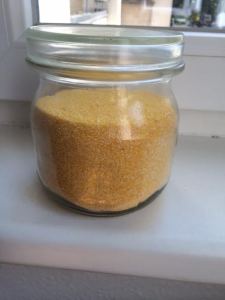
polenta
Shopping list:
2 400g cans of chopped tomatoes
2 garlic cloves, finely chopped/grated
1 jar of green olives, from which about 15 olives, drained (i would have preferred black, but they were a no show)
1 jar of capers, a good handful, drained
1 green pepper (any colour would be fine)
2x medium red onion
1 red chili pepper
polenta
olive oil
tahini
parsley, to garnish (optional)
balsamic vinegar, soy sauce (optional)
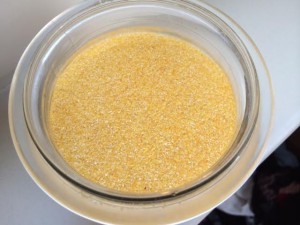
more polenta
So, first things first, this is a quick and speedy meal considering I only started it at 10 in the evening, so get your food processor ready. (If you do not have one, then of course, finely chopping by hand is fine).
Peel your red onions and chop into 1/4s, core your pepper and also chop into 1/4s, throw into the food processor.
Blitz!
Finely chop your chili pepper and garlic.
Put a large frying pan on a medium-high heat and pour in a healthy glug of olive oil.
Add your pepper/onion mix, stir and warm through for a few minutes.
Add the chili and garlic.
Warm through for about 30 secs to 1 minute. You do not want to burn the garlic.
Pour in the cans of tomato, swill each can about half way with water and also pour into the pan. Stir and on a medium heat bring to a simmer.
You want the sauce to reduce by roughly a 1/3.
I like to season my sauce now with a little salt, balsamic vinegar and a dash of soy sauce.
Once the sauce has begun to thicken, add the drained capers and olives.
Stir and continue to cook until it has reached the desired consistency. You may want to add some water if it becomes too thick.
When the sauce is almost ready, it is time to make the polenta.
Into a large sauce pan, add 3 cups of water and bring to the boil.
Once the water is gently boiling, I slowly added 1.5 cups of polenta, whisking into the water. It should become thick, somewhat pliable, yet still creamy.
Next add a healthy glug of olive oil and tahini (roughly 2tbsp each) and stir.
Season.
Serve the polenta on a plate/ large bowl, as you would a mash, and top with a generous spoonful of the tomato sauce. Parsley garnish.
Dig in.
